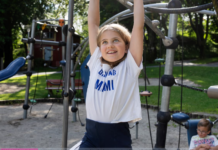A new study addresses the challenge of assessing levels of pain experienced by children with medical complexities in the absence of verbal skills. The results highlight parents’ unique sensitivities and awareness of children’s pain in the absence of child verbal skills and a need for more streamlined, efficient care for children unable to articulate the pain they experience.
Brenna L. Quinn, Jean C. Solodiuk, Dominick Morrill, and Sangeeta Mauskar review the state of affairs in pain assessment for this population in a city in the northeastern United States. Theirs represents a collaboration between the Solomont School of Nursing at the University of Massachusetts – Lowell and Boston Children’s Hospital.
Quinn and team’s work provides an aerial view of the hospital stay, and eventual release from the hospital, for children admitted to one hospital’s Complex Care Service with pain as the chief reason for referral. Specifically, they studied some of the characteristics of parents/caregivers identified as indicative of their child’s pain, the sources of pain identified post-referral, and strategies employed by nursing staff to assess pain levels.
“Like neurotypical children, children with medical complexity are at risk for pain from ambulatory care–sensitive conditions […]—but they tend to experience pain more frequently, often on a daily or weekly basis. They are also more likely to be hospitalized for such conditions. A large Canadian study found that hospitalization rates for ambulatory care–sensitive conditions were six to eight times higher among children with an intellectual disability than among those without such disability.”

The subjective, lived experiences of individuals suffering from severe or chronic pain can complicate the process of establishing generalizable pain management systems. Pain assessment and management processes are often muddied by factors including lack of provider-patient familiarity, patient developmental age, both provider and patient communication skills, and patient lucidity.
Researchers defined childhood medical complexity as “those having a cognitive–chronological age mismatch, profound developmental delays, limited or no verbal abilities, and multisystem diagnoses, and who are completely dependent on others for care.” While common medical conditions in childhood may be quickly treatable in outpatient settings, cases involving medical complexity in combination with the absence of verbal communication skills sometimes result in a more extended stretch of time between the identification symptoms and diagnosis. Often, when determinations are eventually made, treatment courses may be more involved than what would have been recommended had early identification occurred.
Over 40 assessment tools have been created to measure childhood pain intensity when self-report is not an option. However, tremendous ambiguity exists because of the variability in childhood disease and the ill-fit of any one-size-fits-all approach. When medically complex, nonverbal children are hospitalized for reasons associated with pain, lack of familiarity among hospital staff with a child’s unique approach to self-expression, and the frequent rotation of providers can stand in the way of care.
Further, inferences about the physiological and mental state of nonverbal patients can lead to significant errors in practice. Quinn and colleagues refer to the “narrower range” of pain-associated behaviors contributing to faster and more accurate medical diagnosis in children who can communicate verbally, and who don’t have medical complexities.
Records analyzed in Quinn, and colleagues’ retrospective study included the medical charts of 46 children with medical complexity, who 1) had been assigned one of four medical codes upon admission to the Complex Care Service of the teaching hospital in which the study occurred (i.e., ill-defined condition, general pain, abdominal pain, and altered mental status), 2) had no more than limited verbal ability, and 3) were unable to express their experiences of pain coherently (e.g., history, location, aggravating or alleviating factors, etc.).
Patients whose records were included in the analysis were all under 25 years of age (only three were older than 20), represented a near-equal male-female split, and had a mean age of 13.3. Most had been hospitalized for approximately ten days at discharge.
Results indicate that in relation to parent-reported presenting symptoms, abdominal issues represented the most common reason for referral, followed closely by general parental recognition of pain symptoms and child irritability. Most caregivers had brought their children to see their primary care providers at least once before referral to the Complex Care Service.
The most common diagnoses received by patients upon discharge were urinary tract infection, constipation, and increased seizure activity. Notably, patients with a chronic pain diagnosis had the longest mean hospital stays (17.6 days), likely due to the ambiguity of a pain source and trouble identifying appropriate treatment. Before diagnosis, most patients had been through at least one diagnostic assessment during their hospital stay, and the overwhelming majority had had at least one X-ray.
Multiple forms of pain assessment embedded in medical charts were accounted for by researchers, including the Individualized Numeric Rating Scale (INRS; representing collaborative efforts between providers and patients’ caregivers to illustrate indicators of pain specific to an individual child at varying levels of intensity, a particularly good option for children without verbal communication skills), the revised Face, Legs, Activity, Cry, Consolability (r-FLACC; similar to the INRS, but for younger children) scale, the Wong-Baker FACES Pain Rating Scale and Numeric Rating Scale (NRS), and anecdotal notes. Although FACES and the NRS are intended for use with children capable of verbally communicating pain intensity, they were sometimes applied in participant medical charts based on an assessment by proxy.
In total, 3,303 pain assessments occurred across participant records. An average of seven pain assessments happened each day across patients and assessments were an average of 3.5 hours apart. Most assessments were recorded according to an 11-point Likert-type scale. Approximately three-quarters of pain assessments occurred using the r-FLACC system, although assessment modality varied and depended on each patient’s unique needs.
“Although children with medical complexity represent a small percentage of the pediatric population, they use a high proportion of health care services,” the researchers write. “When pain assessment is inadequate or lacking, these children suffer unnecessarily. Continuing to study pain assessment in this population is important. Further multisite studies are needed, as these would offer researchers opportunities to work with larger sample sizes and would permit greater confidence in the generalizability of findings.”
Quinn and team acknowledge their small sample size and the limitation of the singular environment from which their sample was drawn. However, their findings support the recommendations that, when working with medically-complex, nonverbal children, providers could increase their support to patients by:
- “Elicit[ing] parent or caregiver knowledge of the child in order to guide assessment and evaluation, when possible.
- “Us[ing] pain assessment tools best matched to the patient’s cognitive abilities.”
- “Rul[ing] out life-threatening sources of pain, and don’t overlook common sources of pain such as infection, constipation, neuropathy, and subtherapeutic levels of medications.”
This new research by Quinn et al. may have implications for particularly young children without medically complex profiles experiencing pain, and for medically complex adults with limited verbal communication skills experiencing pain. Reading between the lines and into some of the nuances of pain, and improving screening processes to expedite identification of common conditions, could have a combined positive impact on the illness experience of individuals seeking (or referred for) medical attention to reduce pain
****
Quinn, B., Solodiuk, J. C., Morrill, D., Mauskar, S., (2018). Pain in nonverbal children with medical complexity: A two-year retrospective study. American Journal of Nursing, 118(8). (Link)














